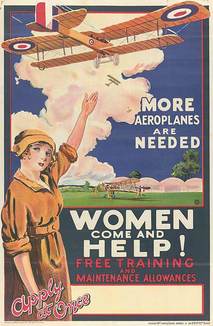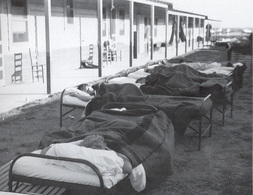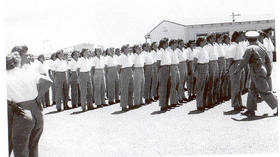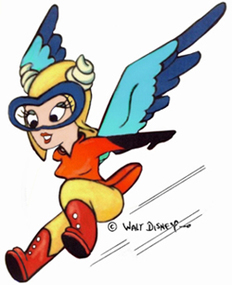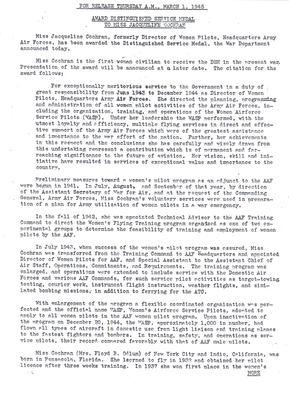Photographs above: Courtesy ofWomen Airforce Service Pilots of WWII and ABC News
"It takes a very special kind of person to establish a new system for establishing and managing organizations, and [Jackie Cochran] was that type of leader." (from an interview with former WASP Jean McCreery)
SEPTEMBER 28, 1940: Cochran wrote to First Lady Eleanor Roosevelt, her friend, to address her idea of a women's flying division in the Air Force, as U.S. citizens were preparing for the impending war. Cochran felt qualified female pilots could do the domestic, non-combat aviation jobs to release men for combat.
|
JUNE 20, 1941: General Henry Arnold- a well-known Army aviator- felt the war would be fought more in the air than previous wars; however, there weren't enough qualified male pilots.
DECEMBER 8, 1941: United States entered WWII. Cochran and others were more insistent on making her plan a reality. |
Courtesy of War Archive Youtube Channel
|
 Courtesy of Liberty Letters
Courtesy of Liberty Letters
SEPTEMBER 1, 1942: "This is not a time when women should be patient. We are in a war and we need to fight it with all our ability and every weapon possible. Women pilots, in this particular case, are a weapon waiting to be used" (Eleanor Roosevelt's "My Day" newspaper column installment).
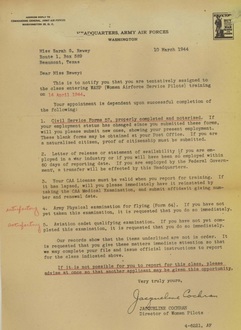 Courtesy of US Air Force Academy
Courtesy of US Air Force Academy
SEPTEMBER 14, 1942: Arnold approved Cochran's training program plans, creating the Women's Flying Training Detachment. For example, Cochran admits one woman into training in the letter at right.
|
SEPTEMBER 21,1942- DECEMBER 7, 1944: In order to become a WASP, one had to fly enough hours to take the FHA test. If passed, Cochran's training took place in Texas. For a woman to earn her Wings, she had to go through seven months of vigorous Army Air Force flight training- same as the male cadets- including advanced flying and ground school.
|
Cochran demonstrated her leadership skills by rigorously training the women to be as capable as the men. Training was "strict... difficult and stressful" (interview with WASP Lucile Wise) and "very intensive" (interview with WASP Bee Haydu). But, their work paid off: "It is on the record that women can fly as well as men" (General Arnold).
|
|
The girls would sing songs during training that they wrote to help them endure the difficulties.
|
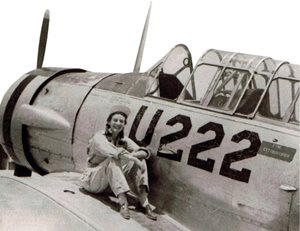 WASP Bee Haydu, Courtesy of Ready54.org
WASP Bee Haydu, Courtesy of Ready54.org
According to Bee Haydu, Cochran trained these girls tirelessly because, "She wholeheartedly believed that women could function as well if not better than men in what was viewed as 'men’s work'" (Interview with WASP Bee Haydu). "We not only had to be as good as the men cadets... we had to be better!" (Interview with WASP Jean McCreery)
"I'm very happy that we've trained a thousand women to fly the Army way...I think it's going to mean more to aviation than anyone realizes" (From a speech given by Jackie Cochran).
|
April 24, 1943: The first class of WASPs graduated, and Cochran led them on numerous missions, including "ferrying, engineering test, demonstration, check pilot, safety pilot, administrative, flight instructor (Basic and Instrument), towing targets for anti-aircraft, towing targets for aerial gunnery, tracking and searchlight missions, simulated strafing, chemical missions, and radio controlled flights" (Texas Women's University Library).
WASP Bee Haydu noted, "There were two Commands, The Ferry Command and the Training Command. Ferry Command ferried aircraft from the smallest to the largest all over the country and to Canada. In the Training Command whatever base you were assigned to, you flew what aircraft was there. There were about 12 different jobs such as Engineering Test Pilot, Tow target where anti aircraft ground gunners practiced shooting at a target being towed with live ammunition, flying gunners so they could practice shooting from a moving plane; utility pilot, experimental flights, etc. We were based at 150 Army Air Force bases throughout the U.S. It was Cochran’s ambitious desire that WASP be able to do every job in the service" (Interview with WASP Bee Haydu). |
|
March 1, 1945: Cochran received the Distinguished Service Medal. "Under her [Cochran's]leadership the WASP performed, with the utmost loyalty and efficiency, multiple flying services in direct and effective support of the Army Air Forces which were of the greatest assistance and importance to the war effort of the nation."
One WASP described Cochran in an interview: "Because she was trying to establish a New Idea (women can do anything in an airplane that men can do), it was necessary for her to be a strong resilient leader. If there was a problem (and there were many) she got right there to clear it up...it was her fight for us that got us as far as we did" (Interview with WASP Jean McCreery). |
